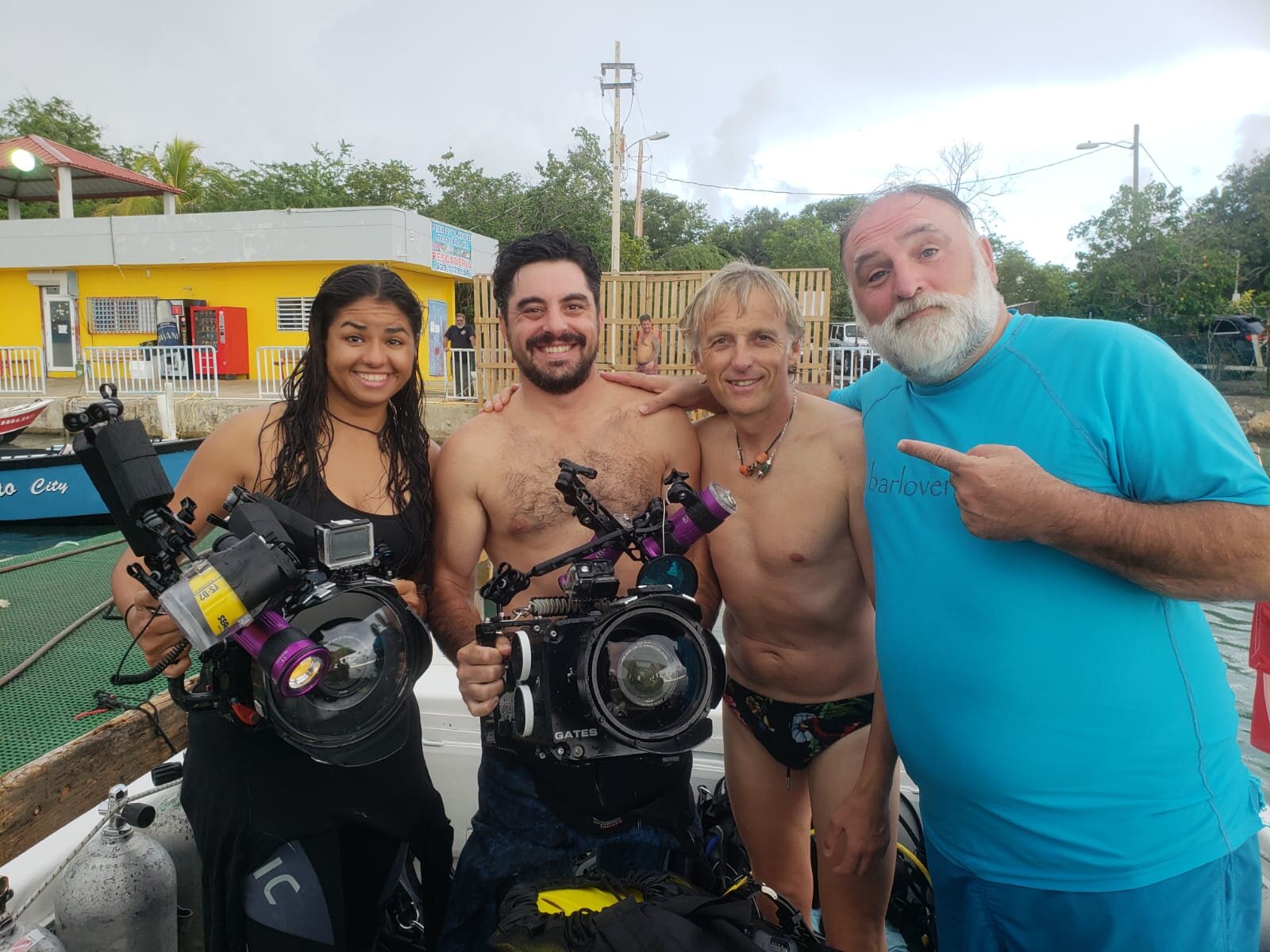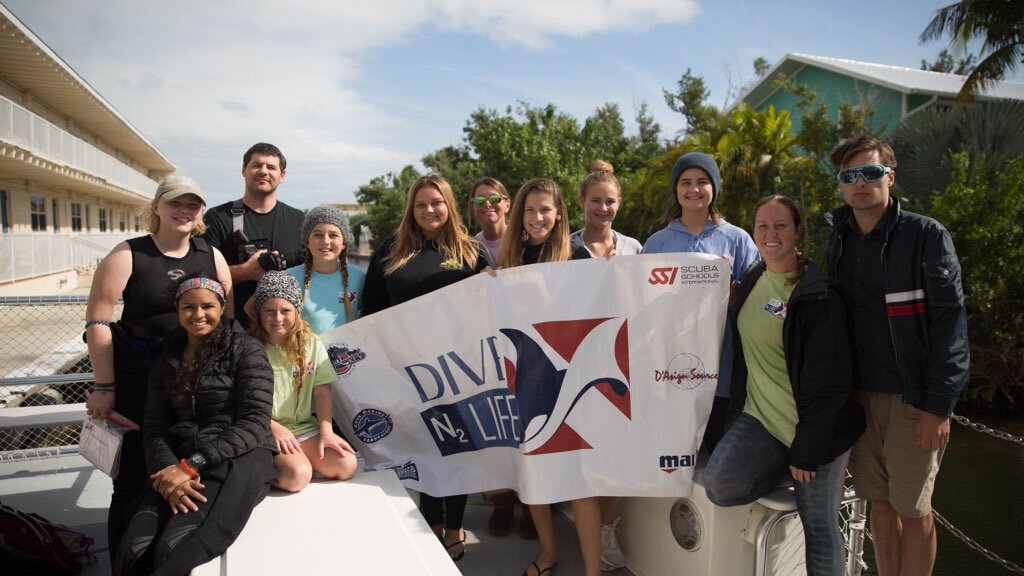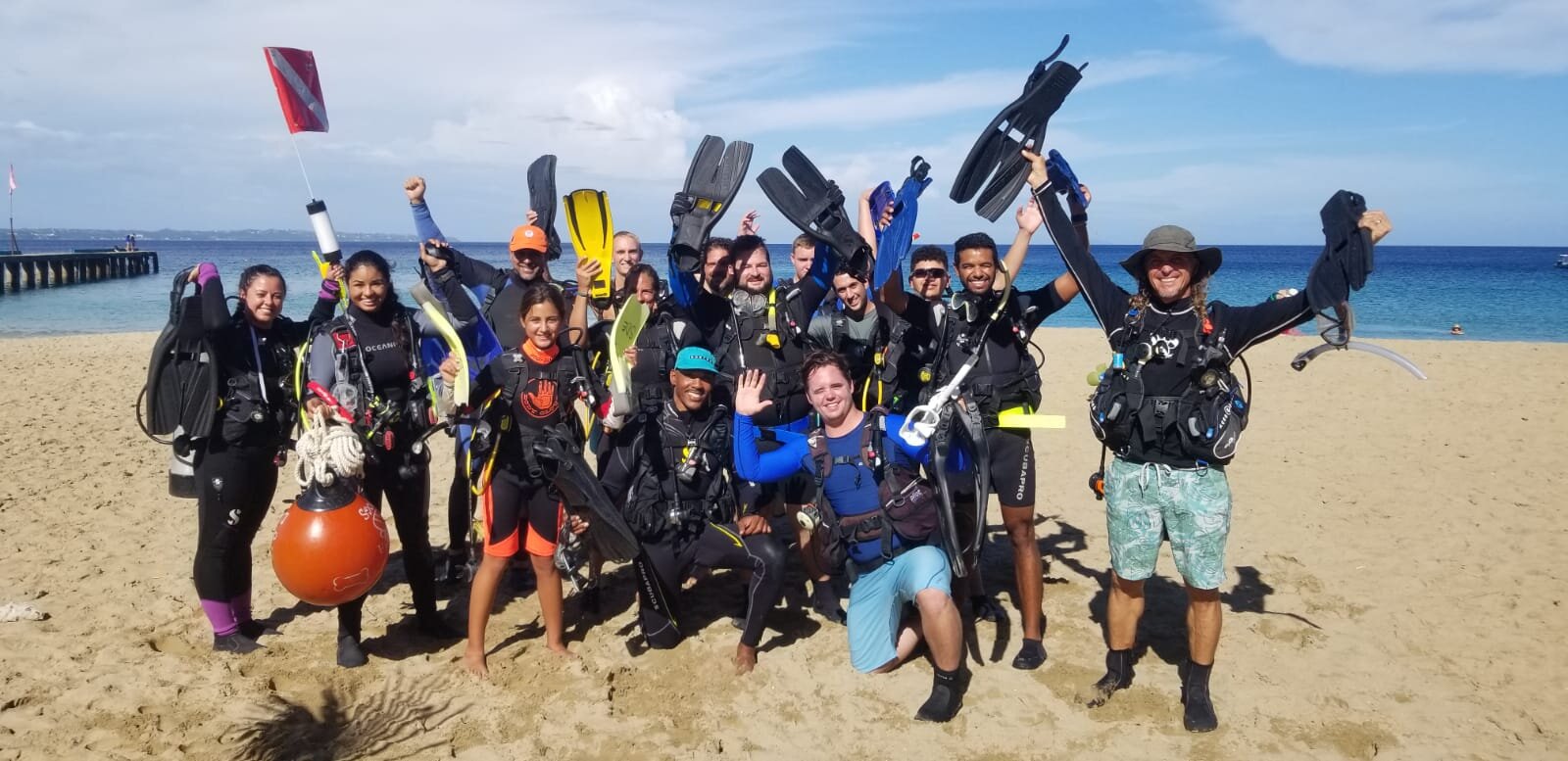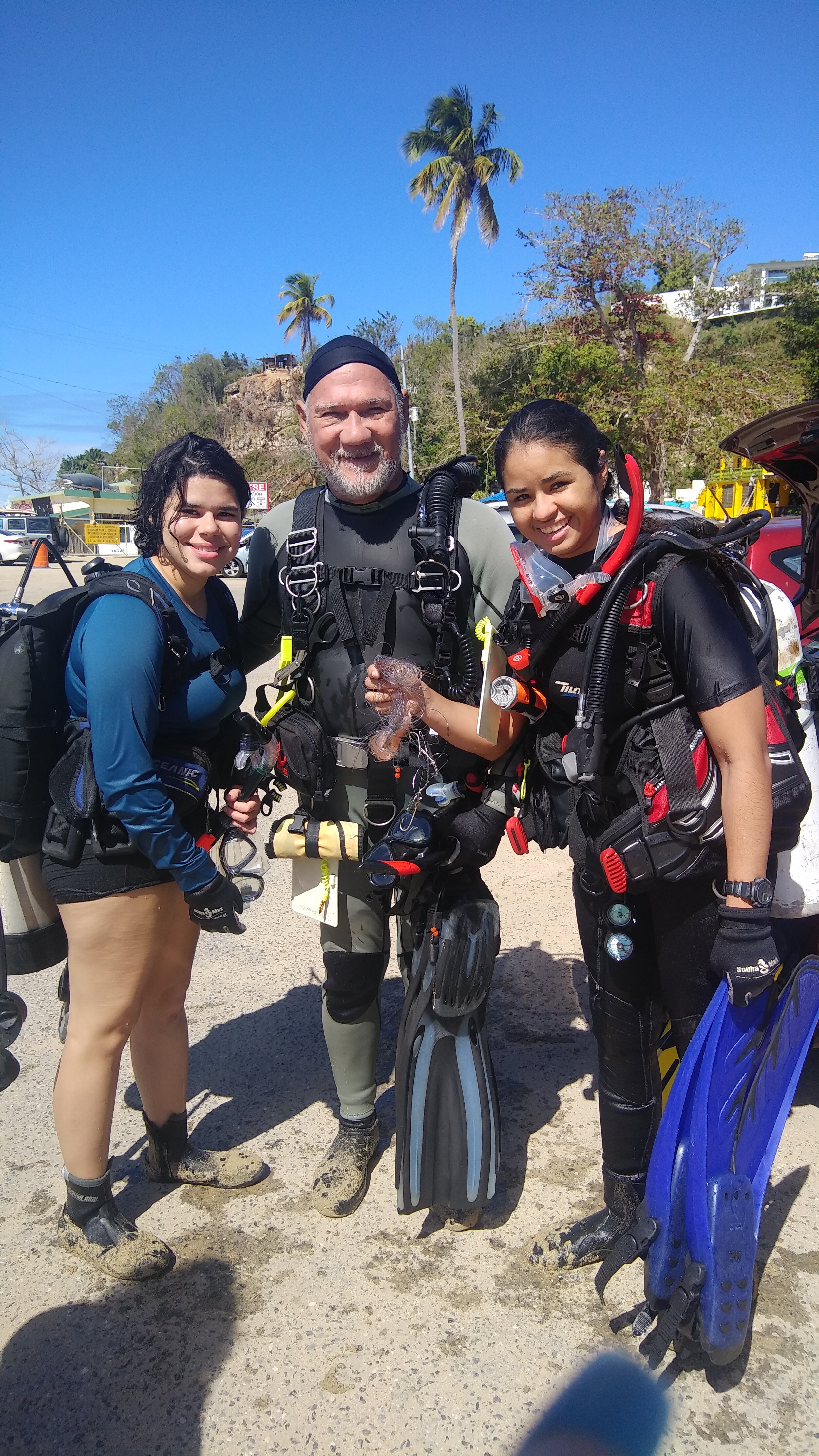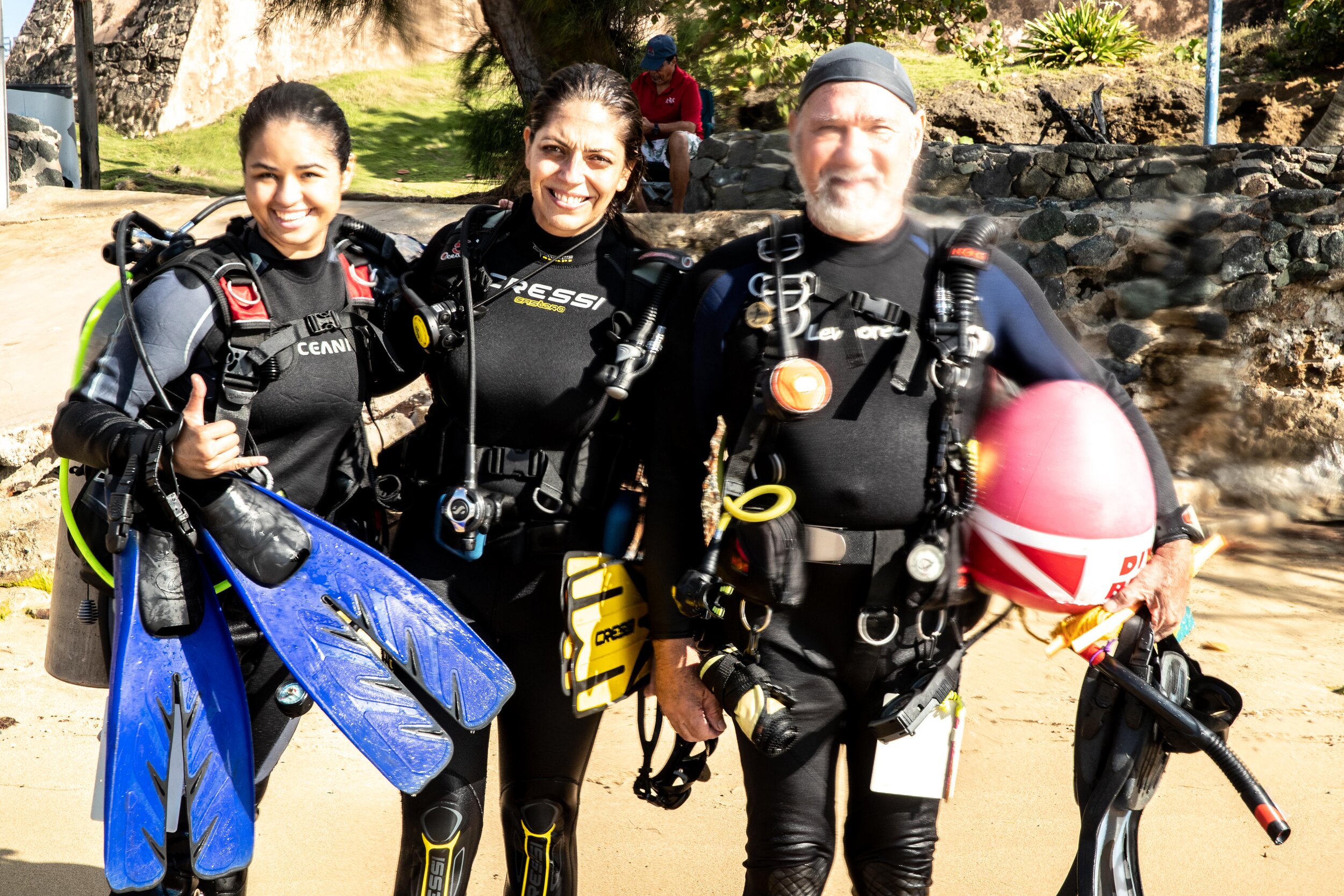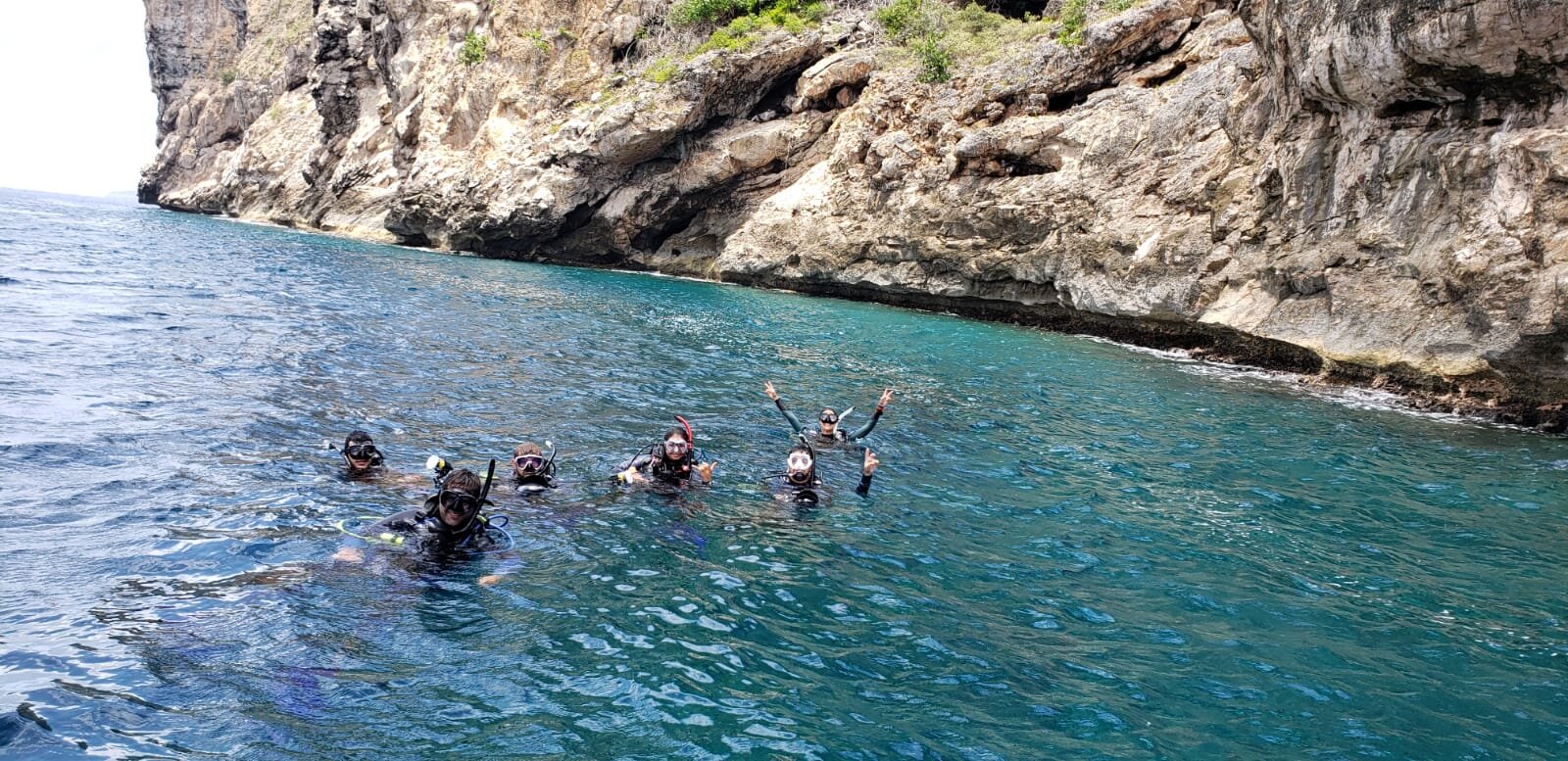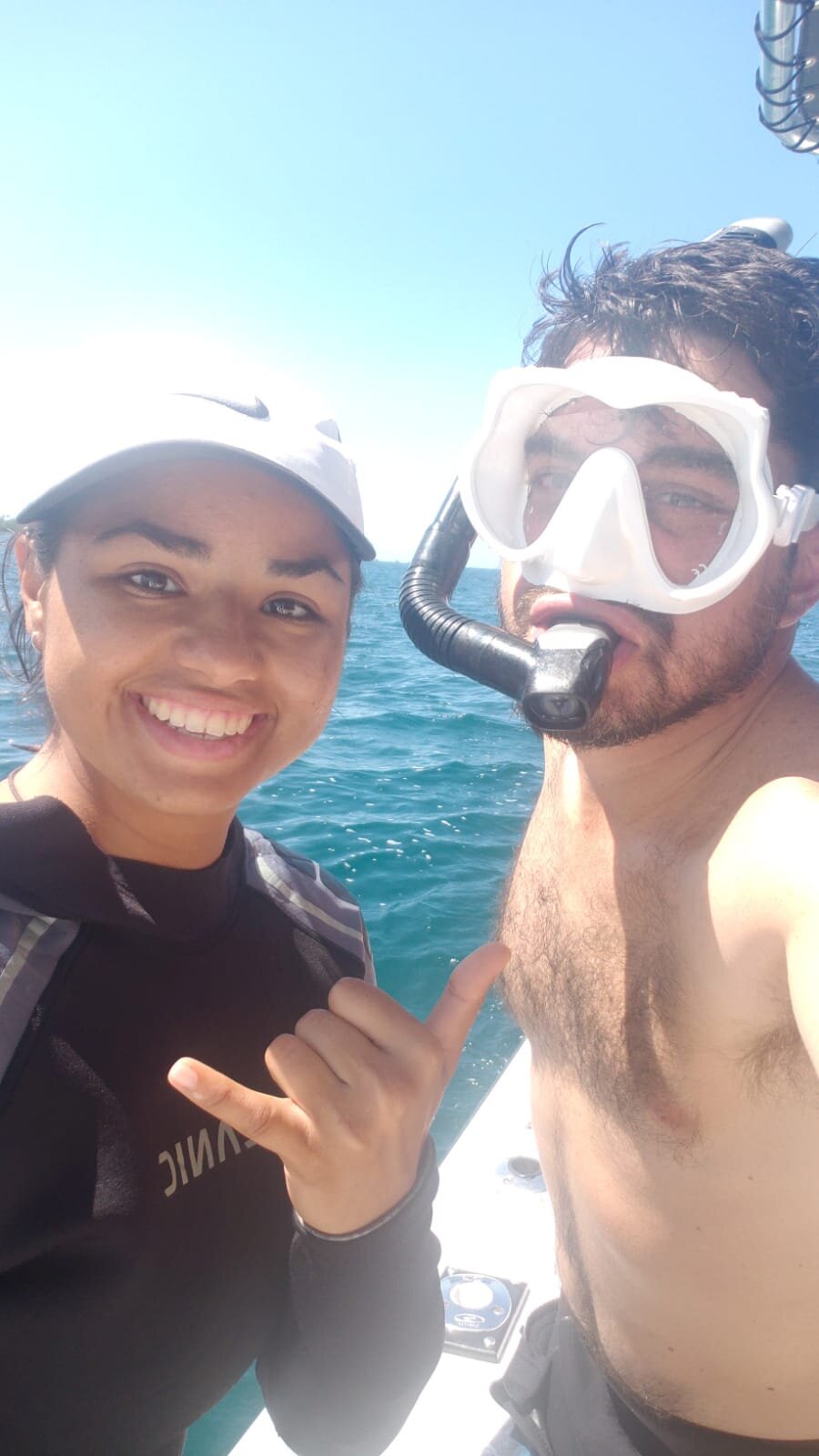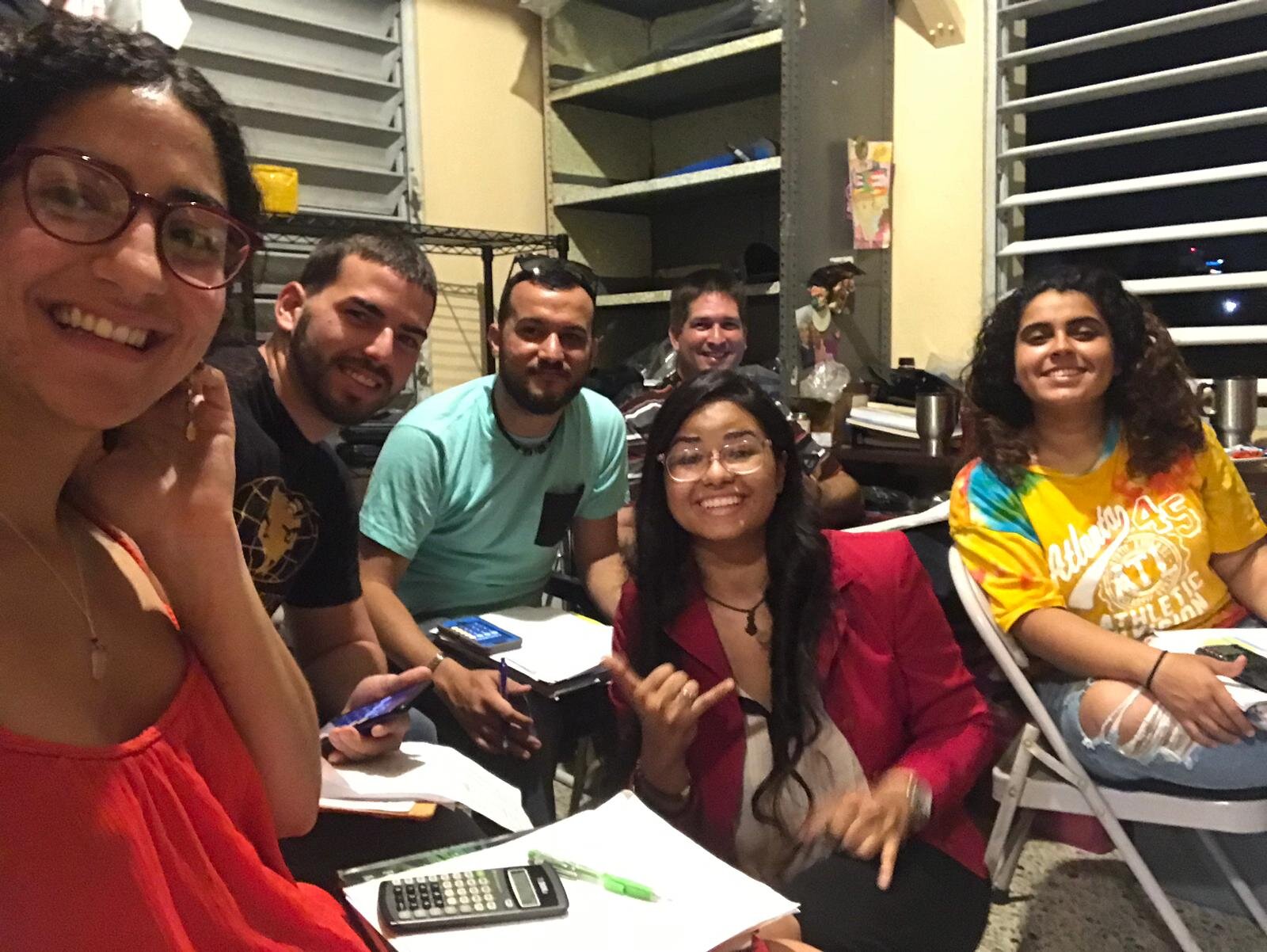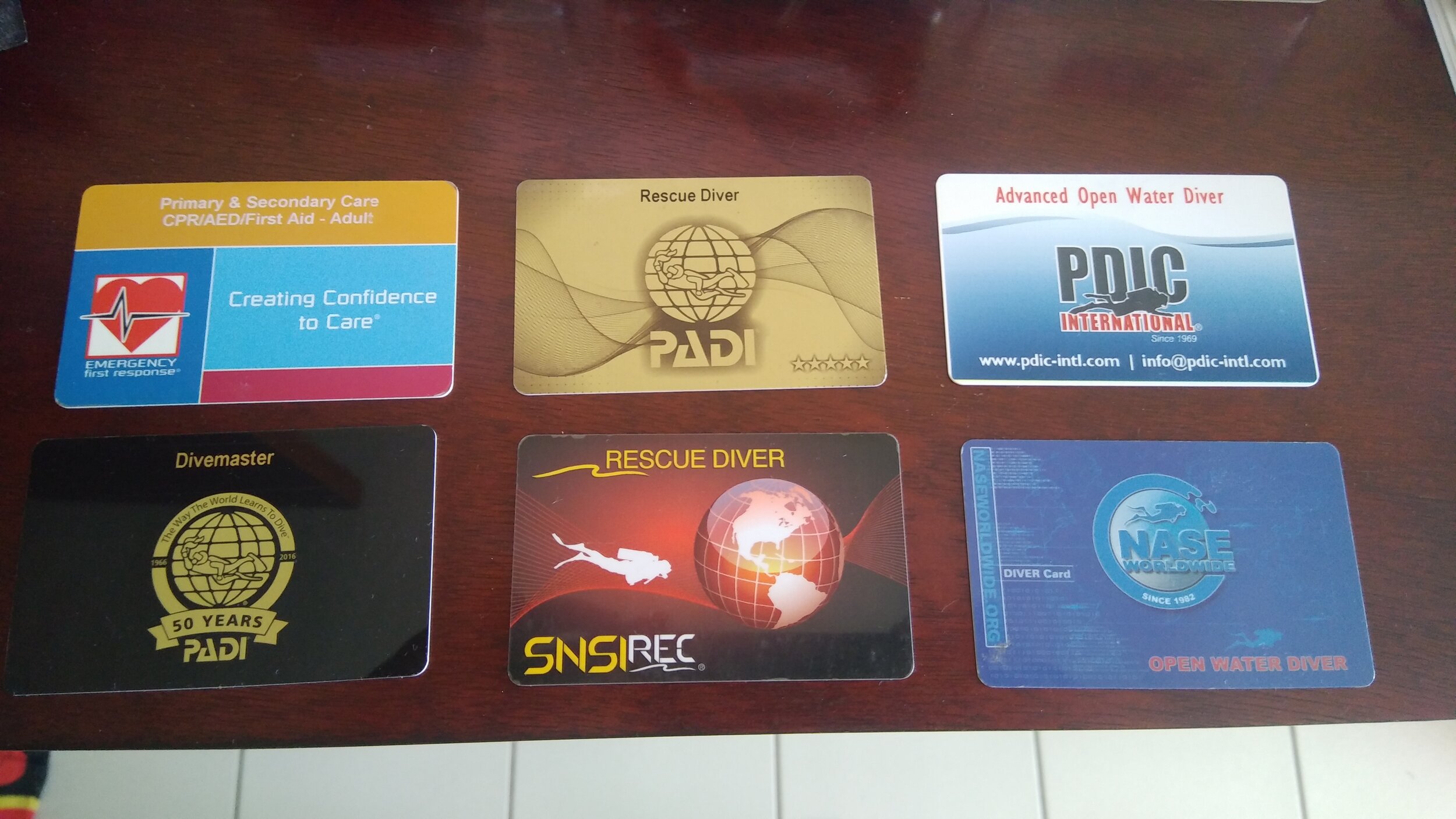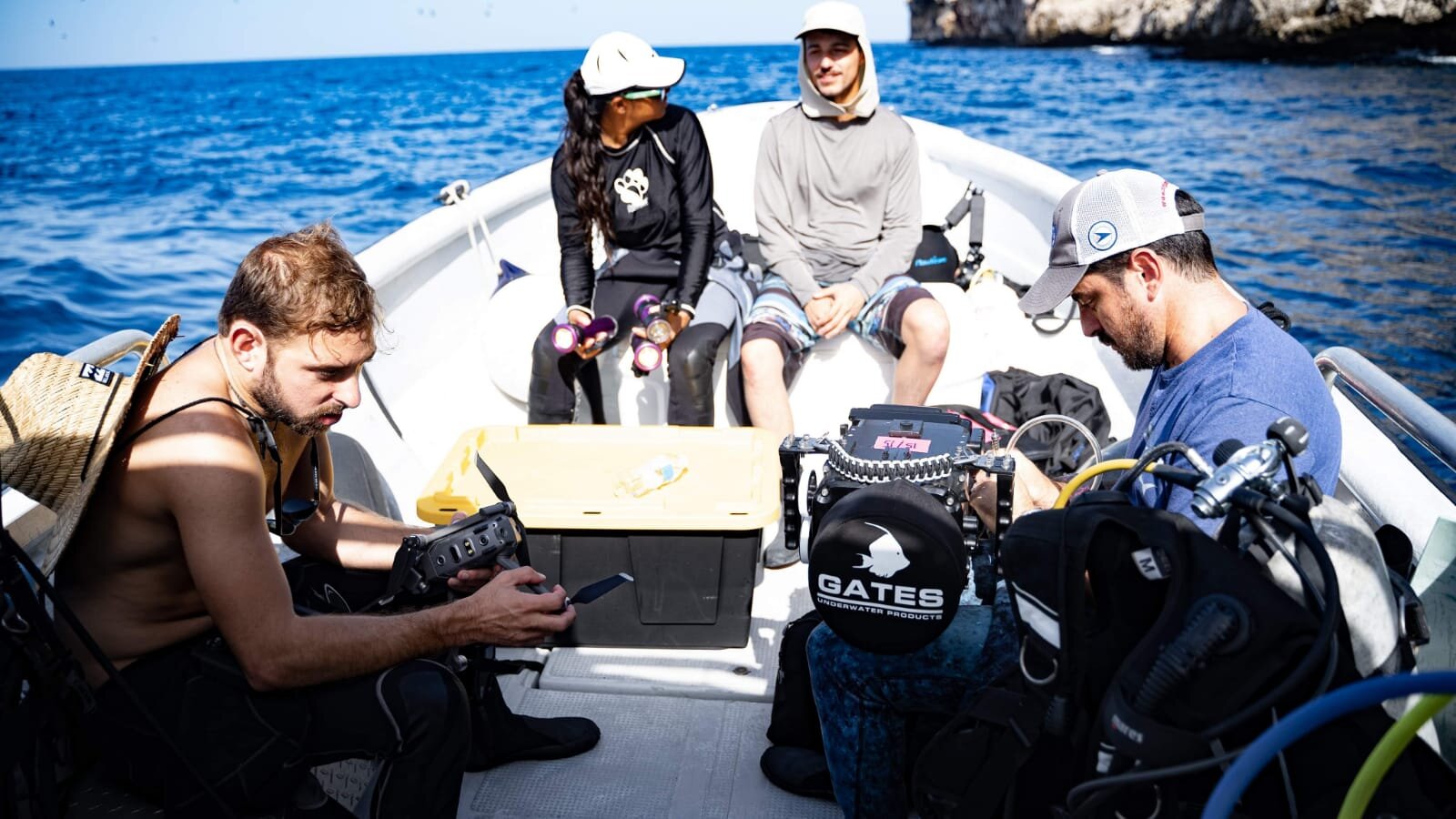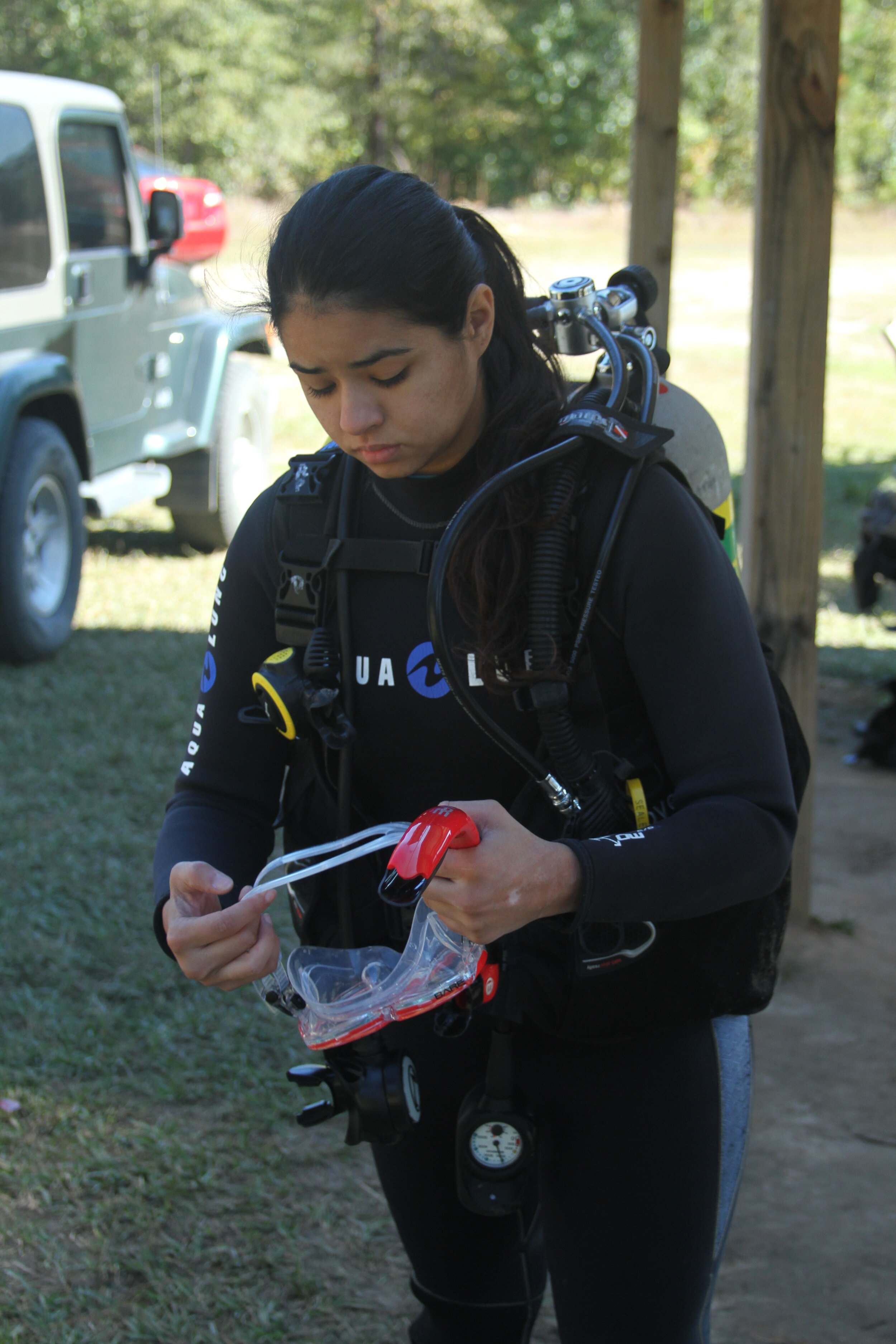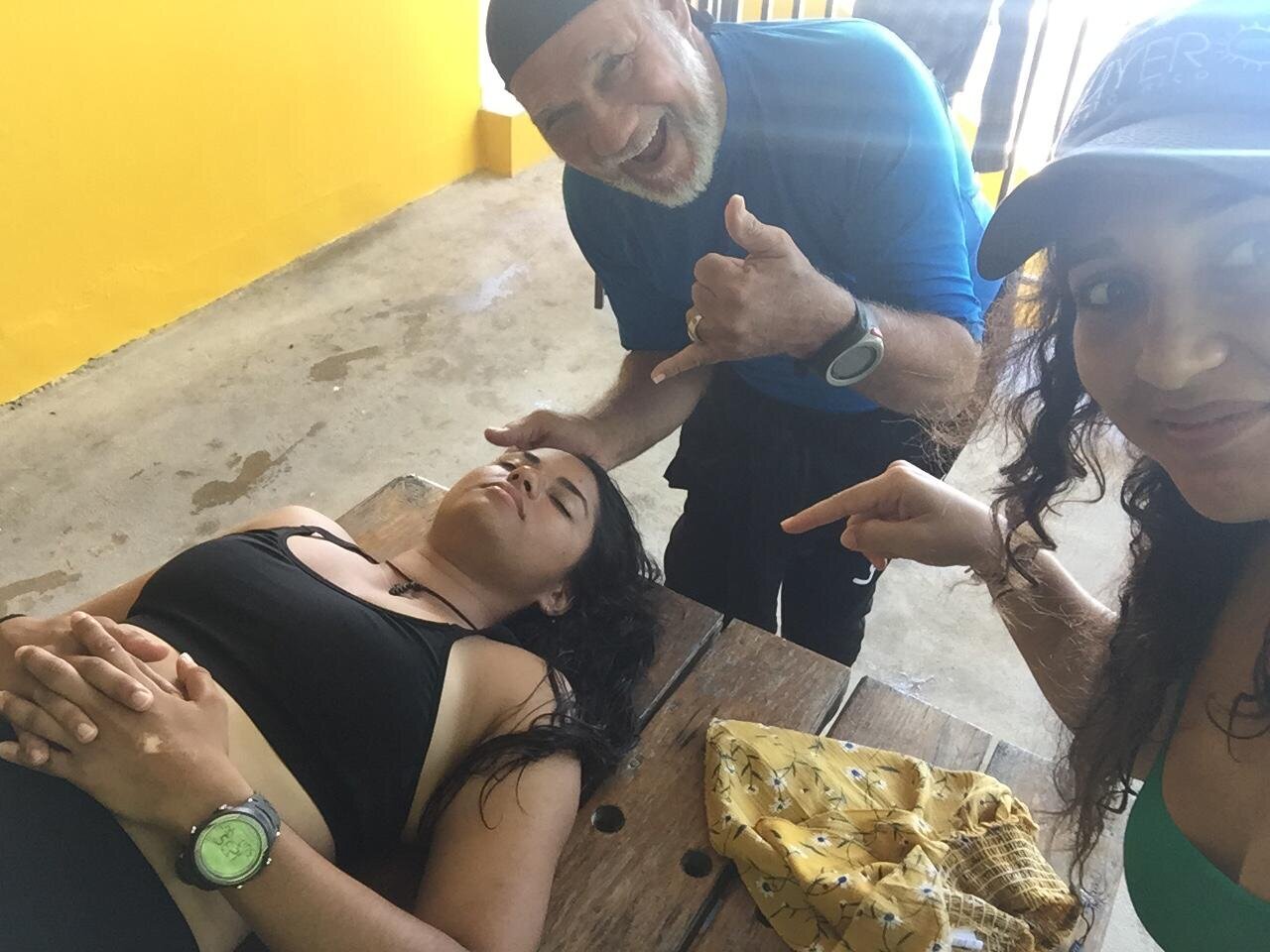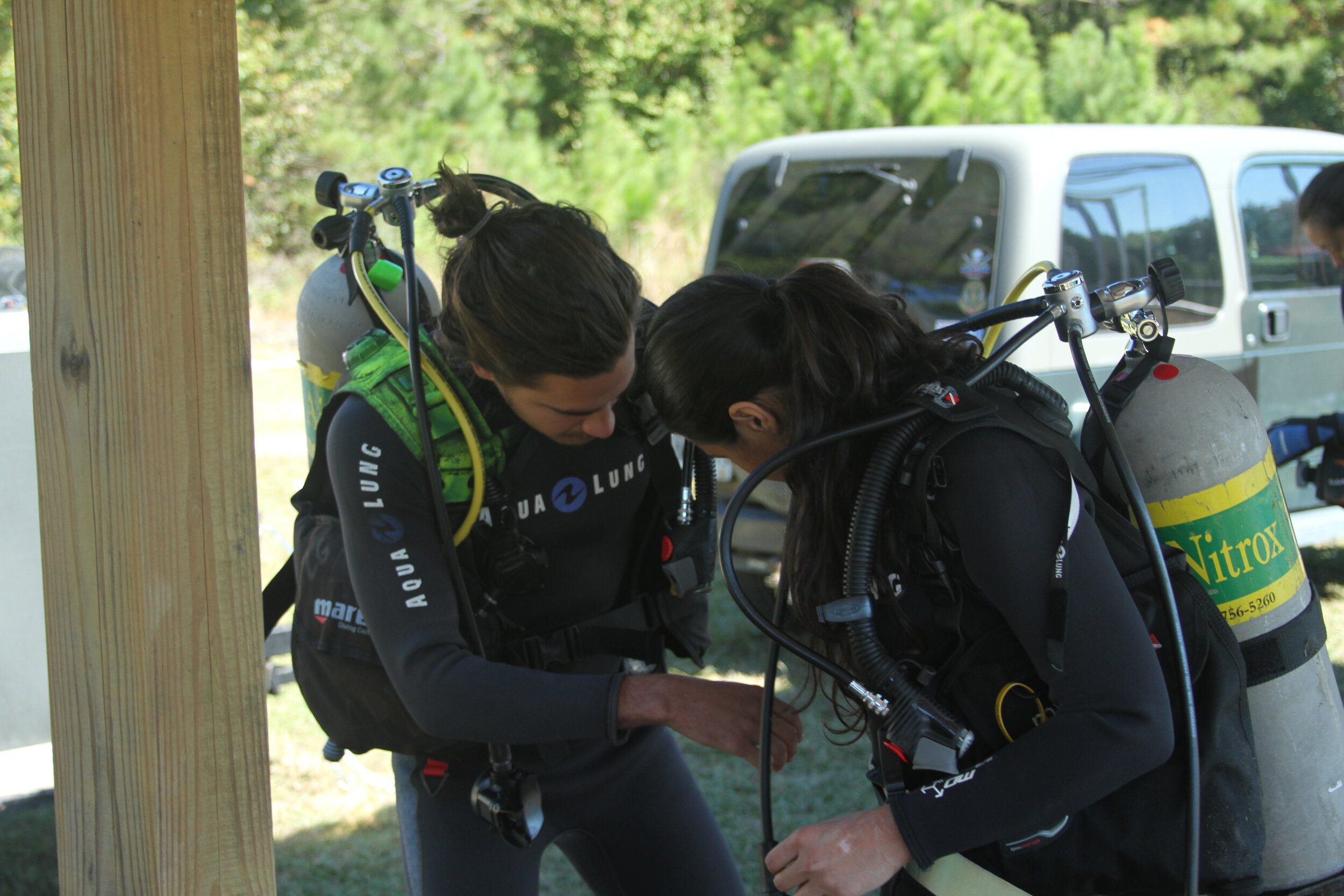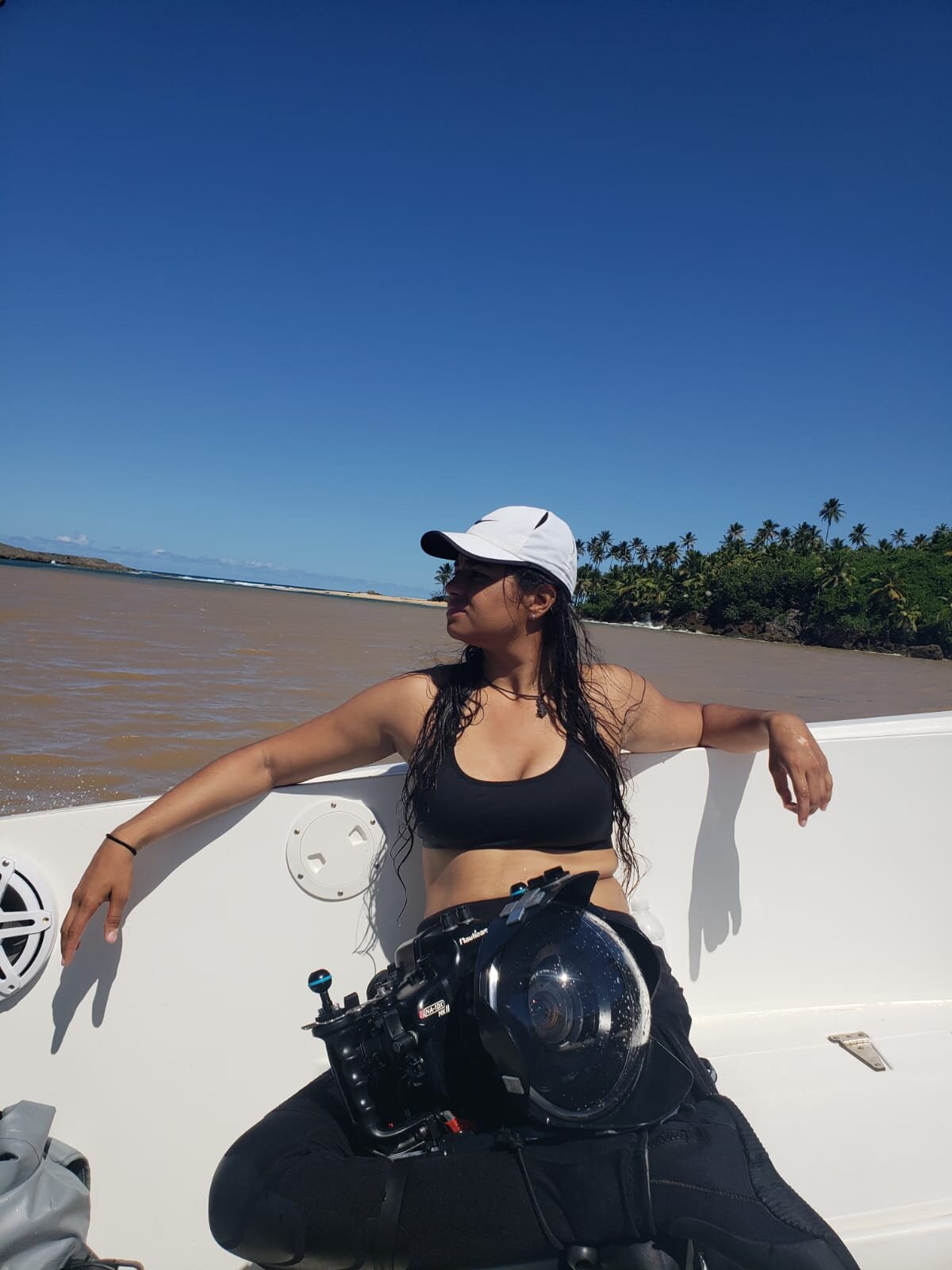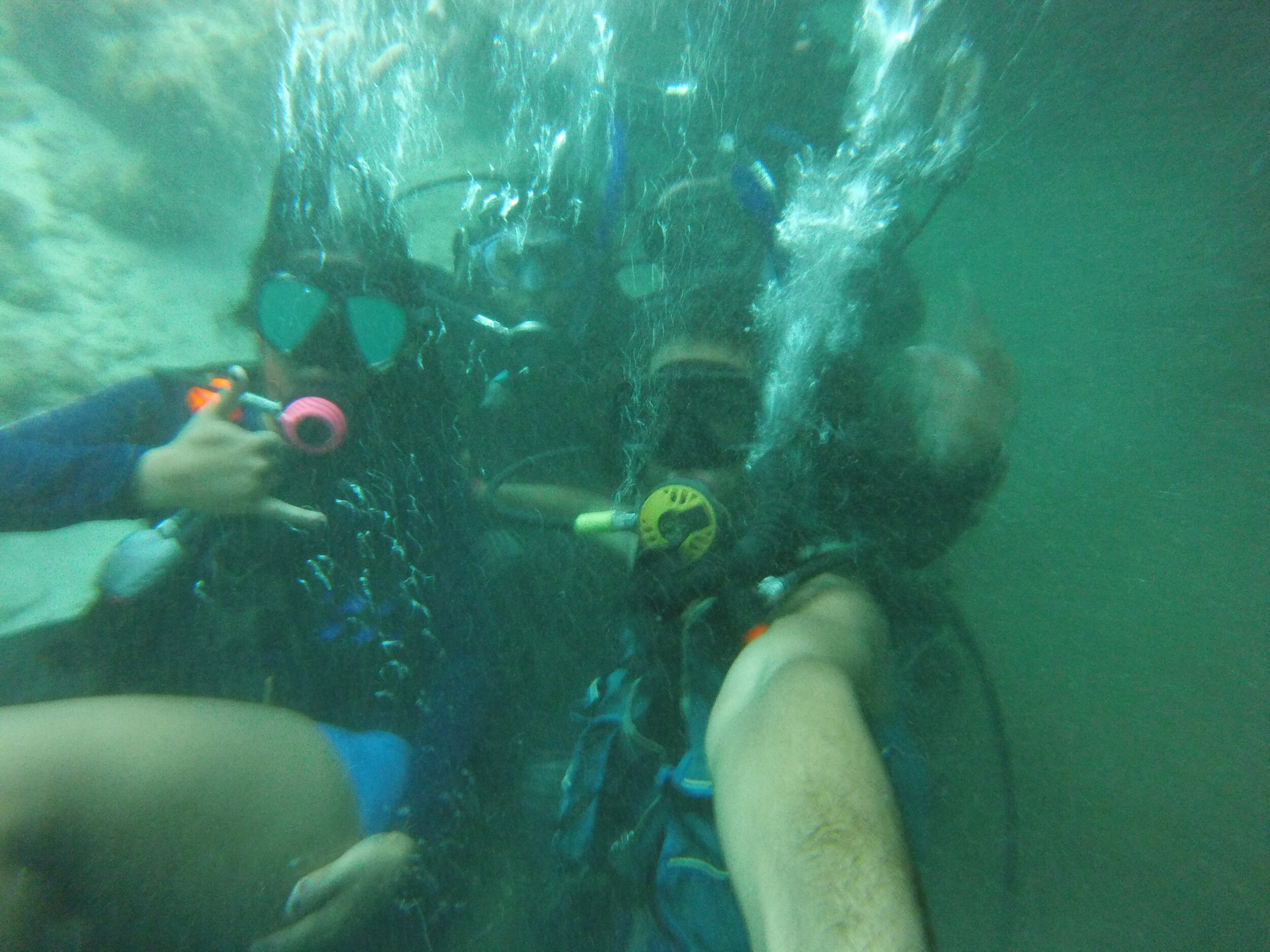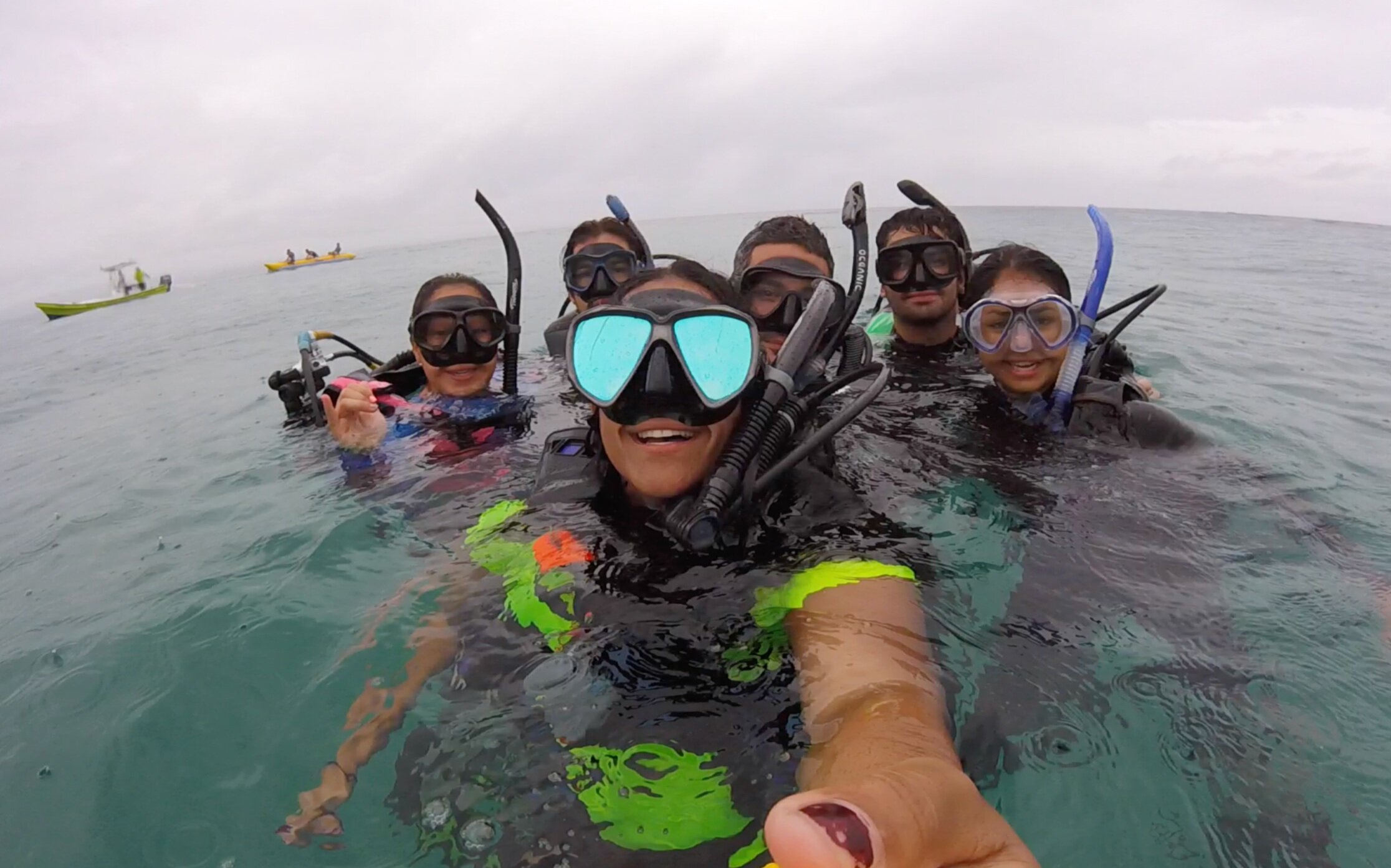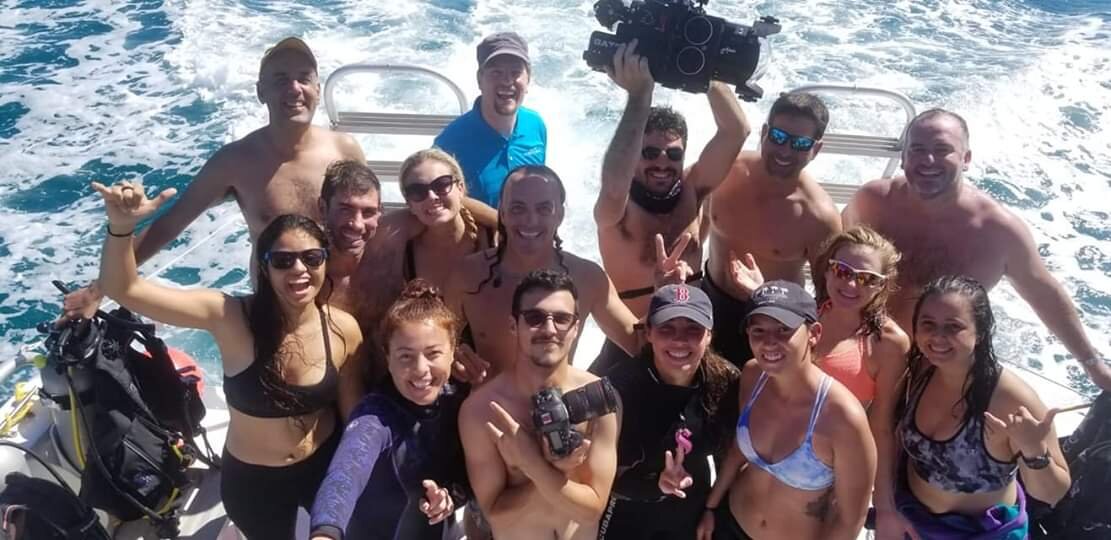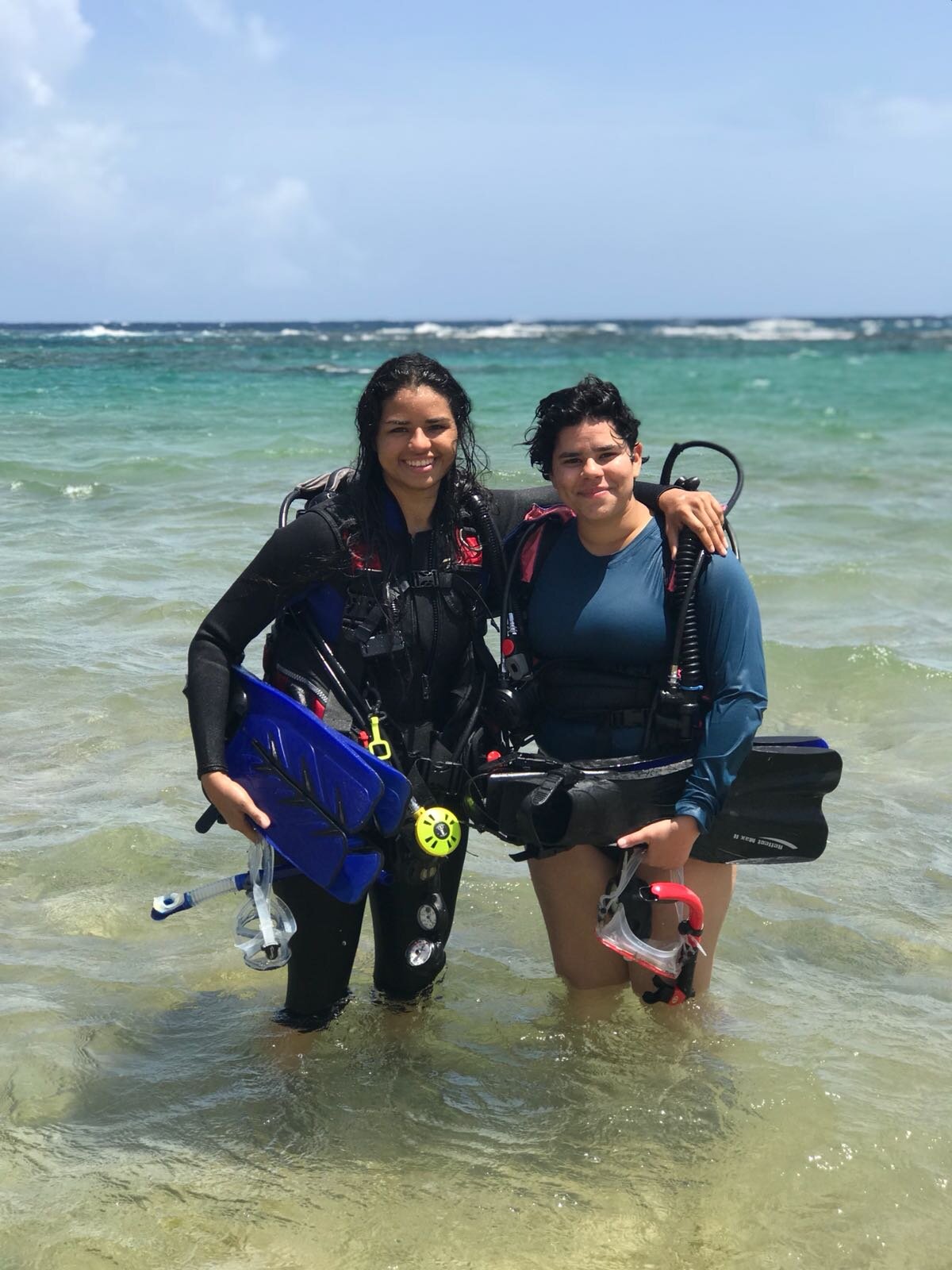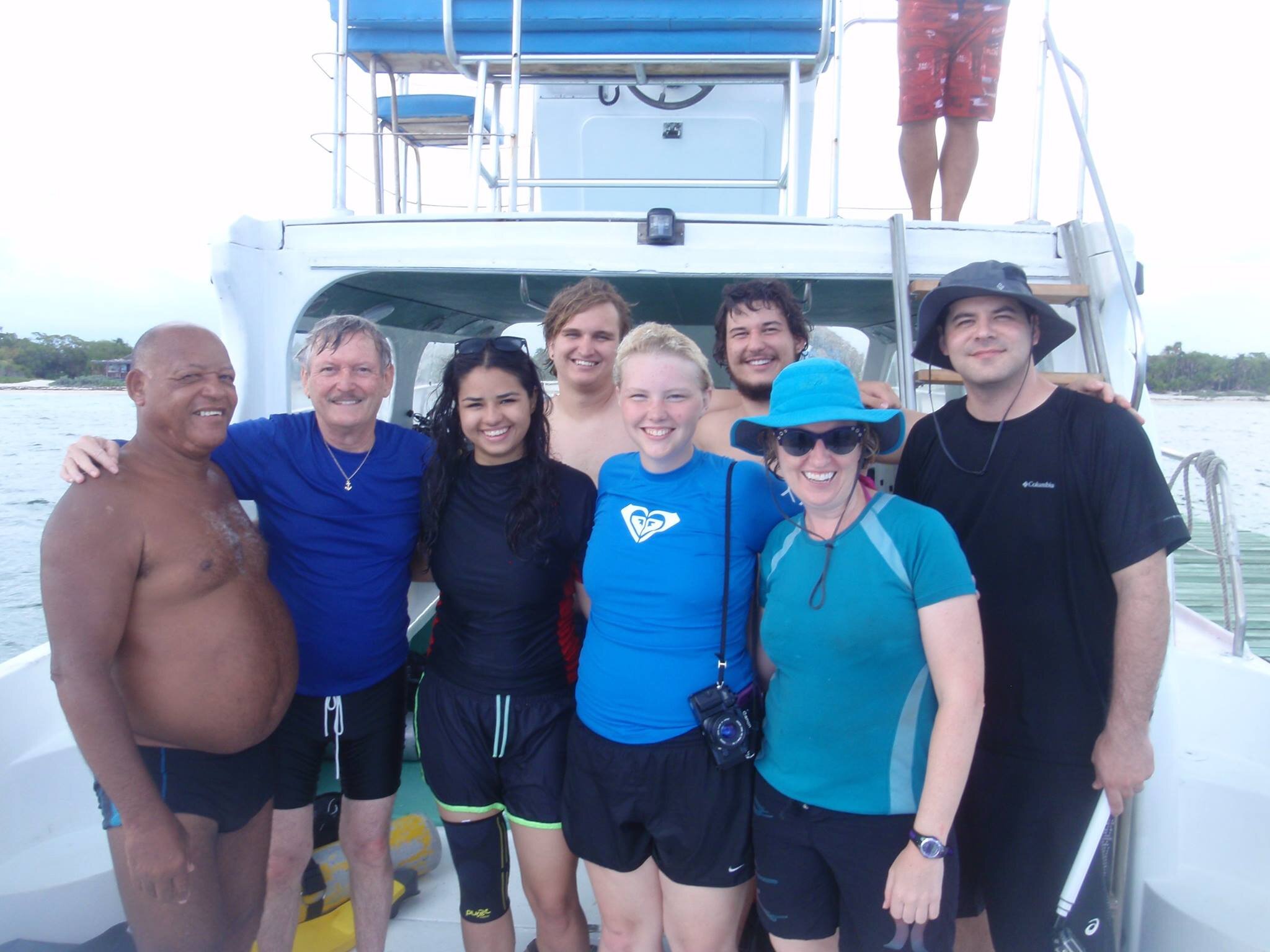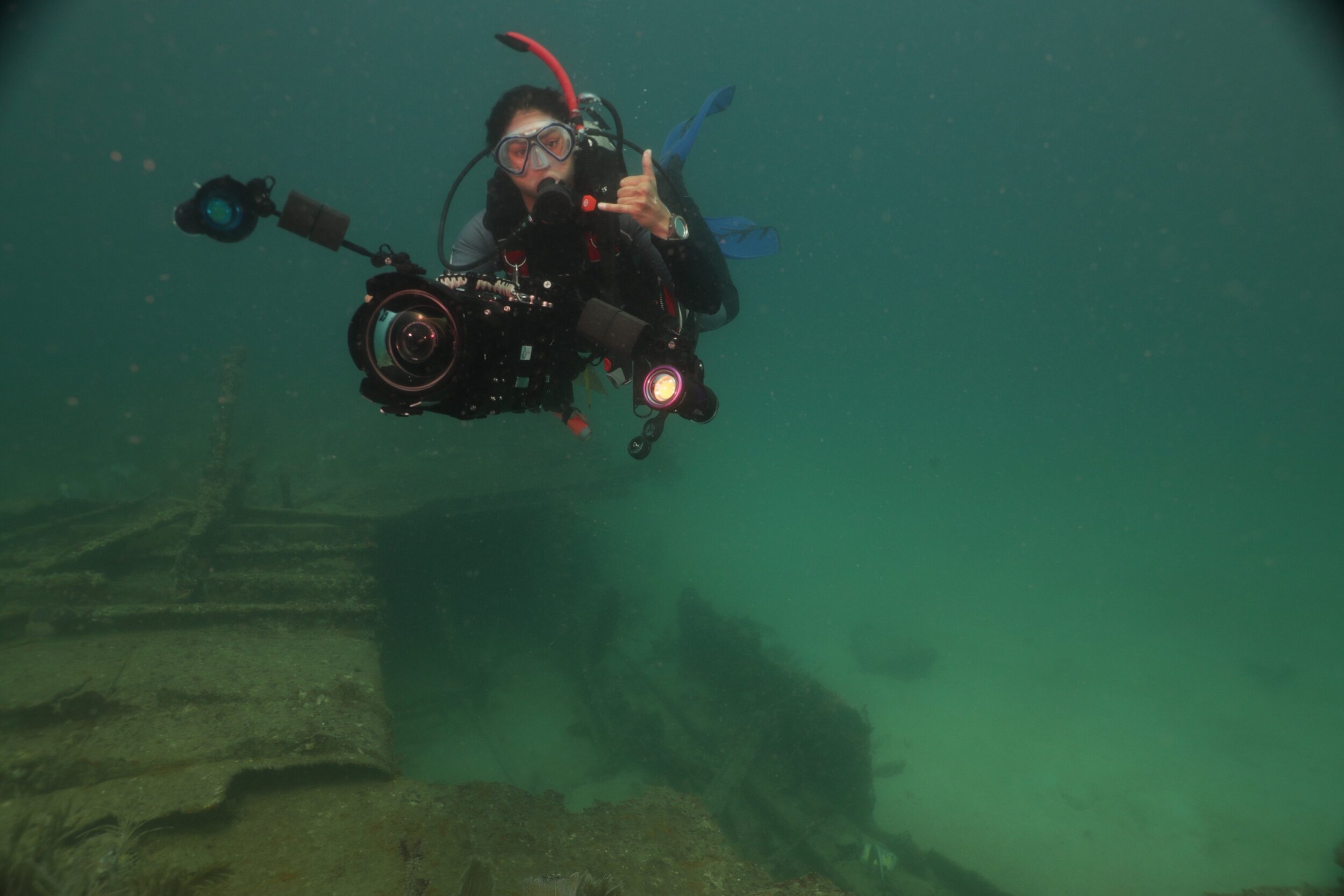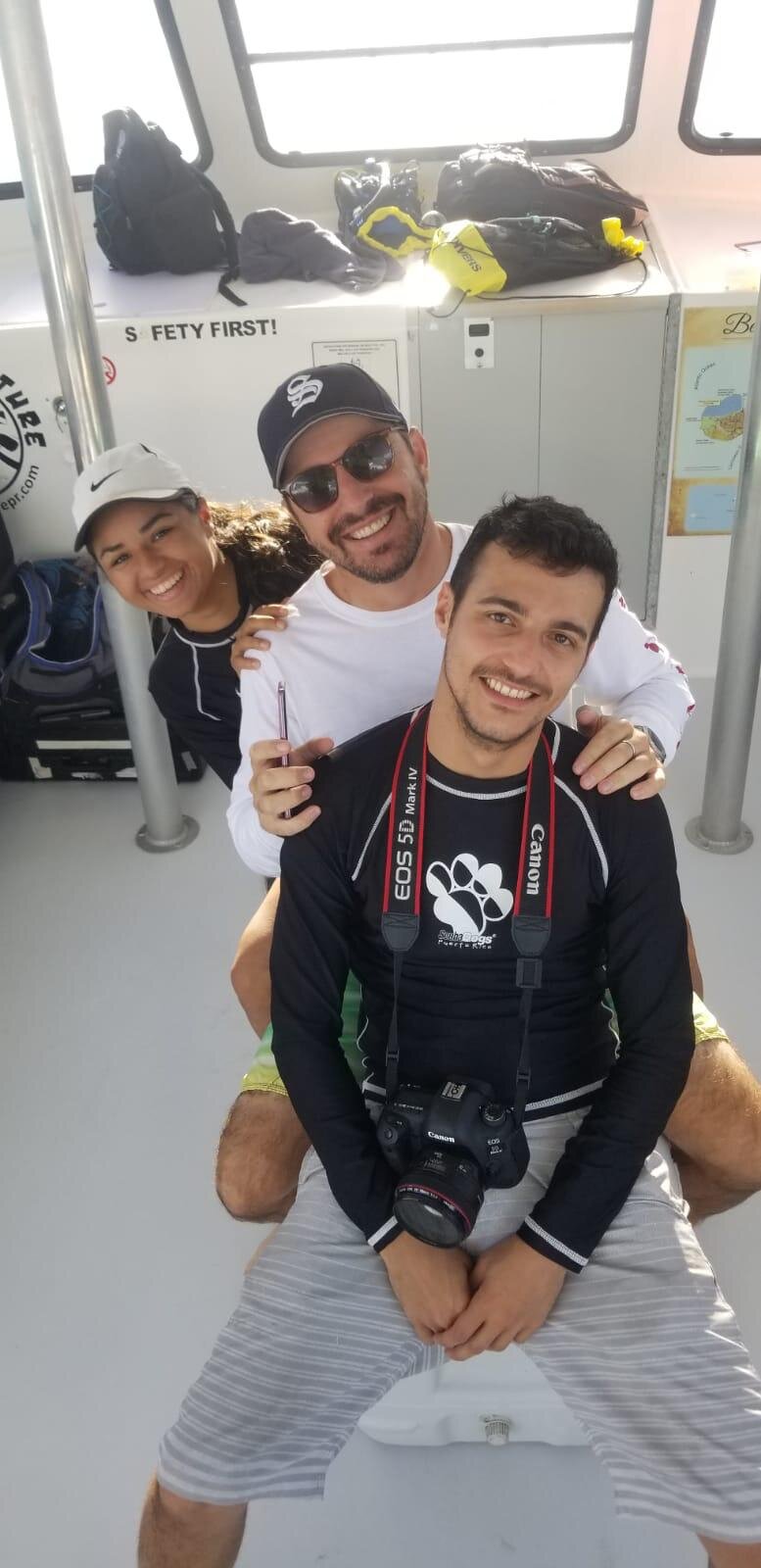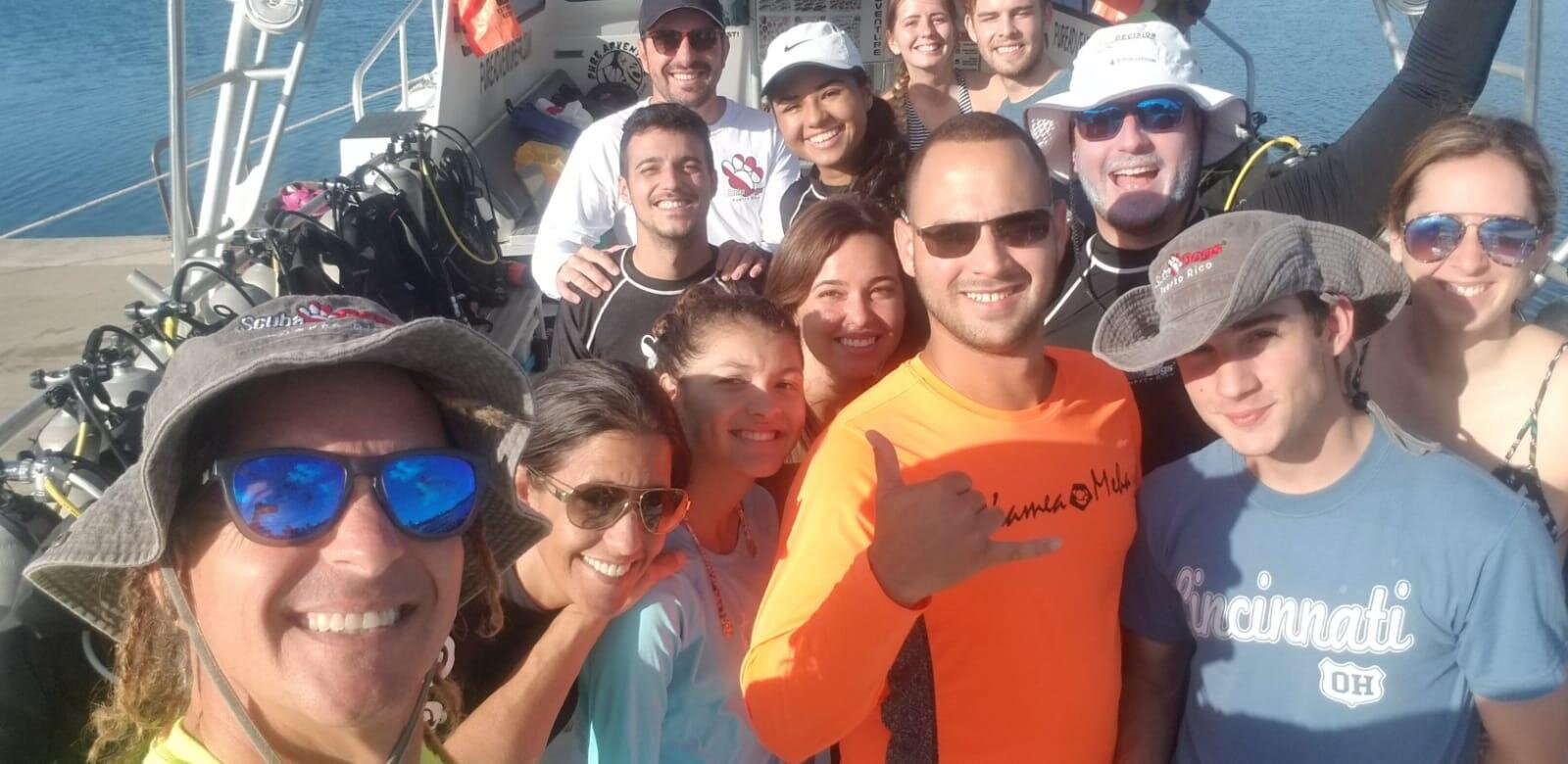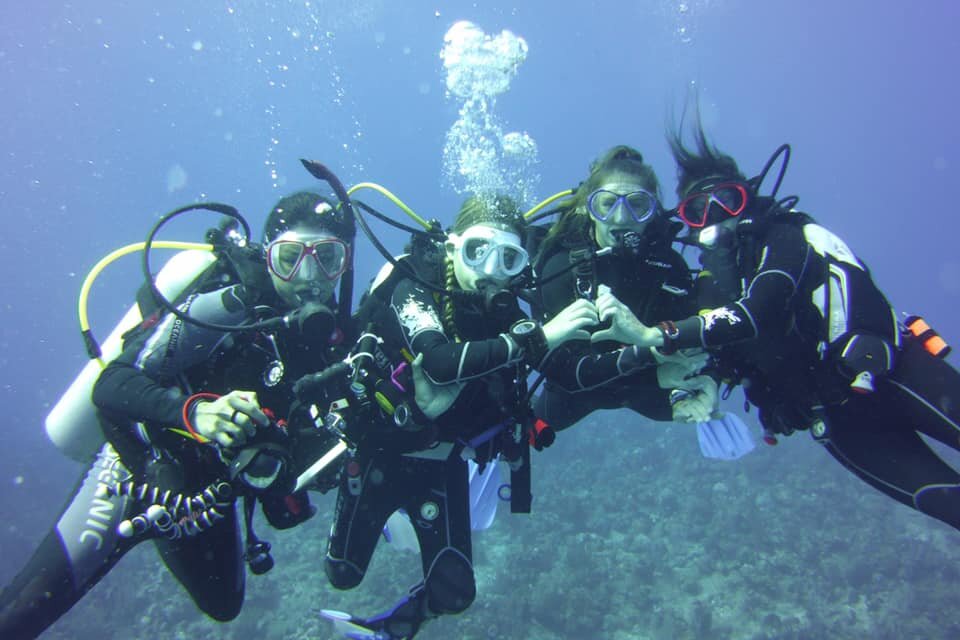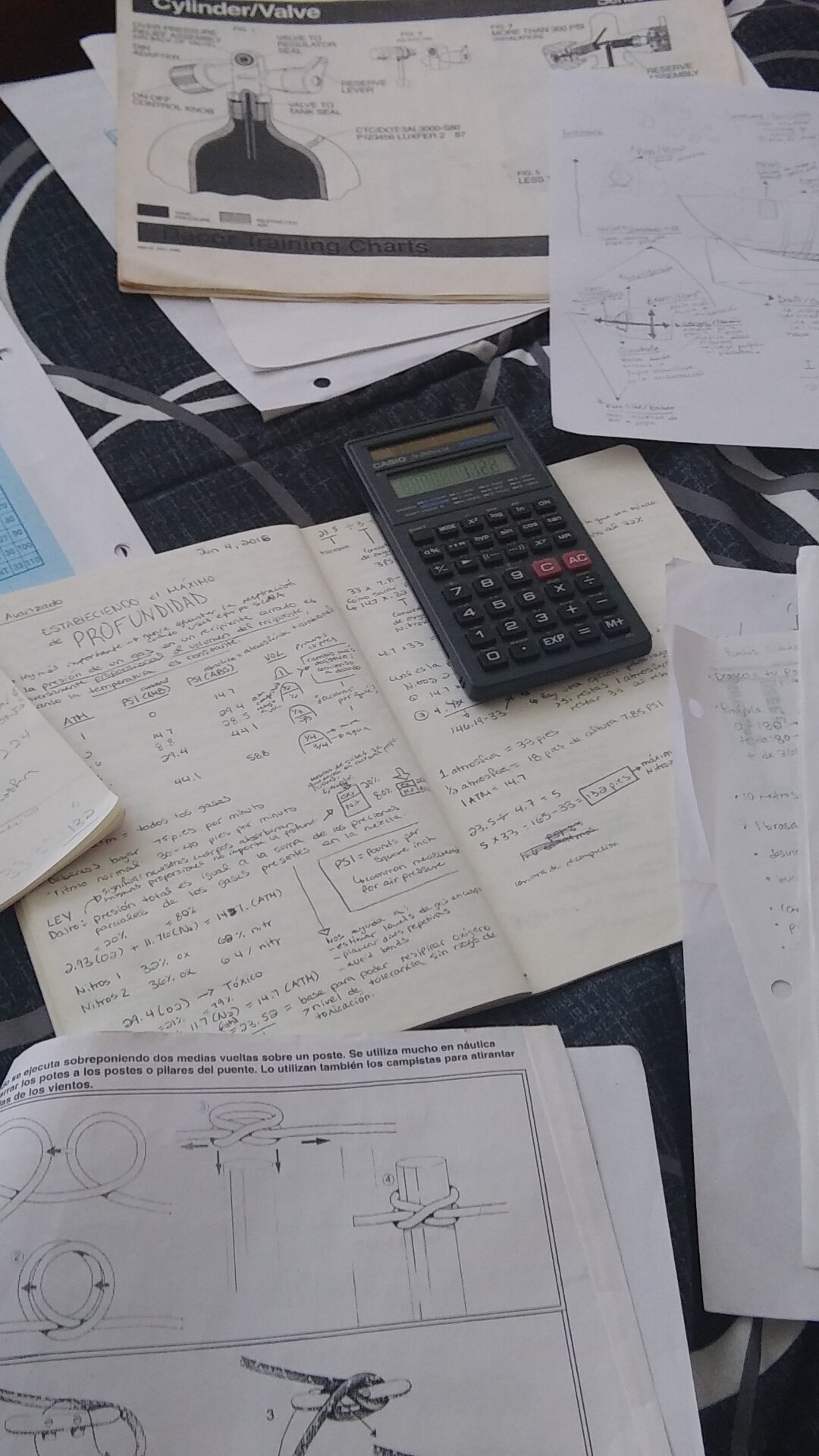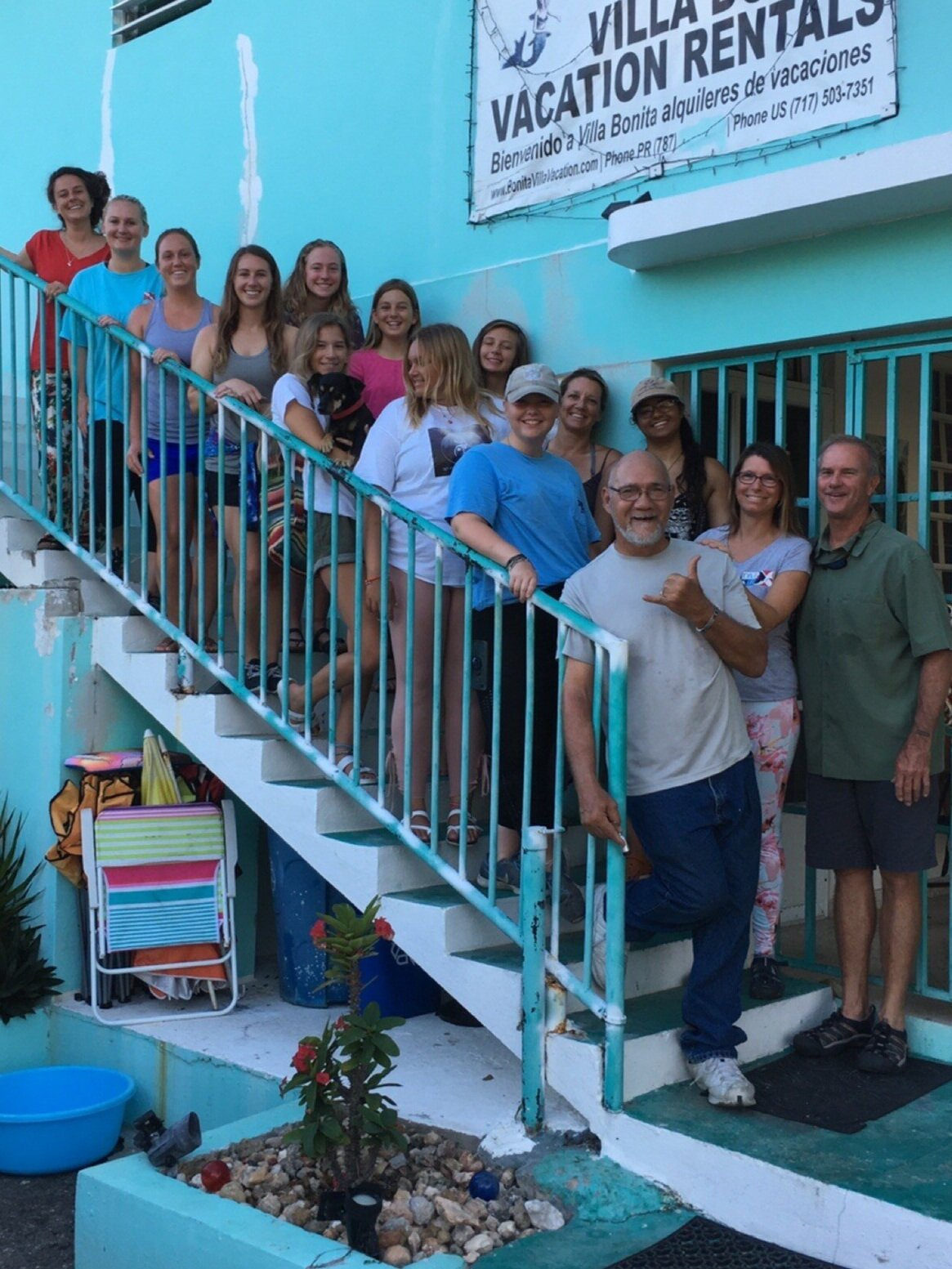Underwater Cinematography
Want to take your cinematography to a new depth but don't know how to? (pun intended)
Underwater cinematography is a marvelous practice that is limited to a few, mainly because it’s astronomically expensive. That’s why it is primarily so hard to put into practice. On top of that, it can be a challenge to prioritize the areas of focus, unless you are already submerged in the niche.
I remember when I was first trying to wrap my head around it all, The housings, the air tanks, the ports, the weights, the lights... An entire world of its own.
So where to start?
** Note: Though some tips here may apply to free diving, this post will only focus on scuba diving. **
The following 6 Steps are intended to help guide someone that has no idea how to begin. In a way, you can say it is me talking to my younger self - recommending books, basic gear, breaking down some real life scenarios, and so on. It is an overview that can help you get into the right mindset with clear expectations and goals.
# 1: Crave the ocean
Be honest with yourself. Why do you really want to pursue this? It sure sounds fun to envision yourself with a camera underwater, but why is it that you want it? Even if you already have an inclination for the ocean, tap into that part that gives you more than just thrills. Learn how to reconnect with it regularly. This specialty takes more than just mastering the camera or liking marine life. Your answer should have a strong connection with the ocean; it takes a lot of energy and resources (specially money and time) just to get started - and more so, to stay motivated.
Can you spend hours looking at a starfish that has not much action going on at first glance, yet sparks curiosity in you with its colors, shape, movements, and behavior?
Underwater cinematographers often times are needed as a second unit camera: focusing on all the details that make the experience of the story come together. That was my main goal when working for the Puerto Rico episode of Planeta Calleja, with Chef José Andrés. Though I captured some action, I was tasked on finding all the creatures that made the dive an experience of its own. The jelly fish dancing near the surface; the moray eel popping its head out of the coral structure, willing to protect it’s home; the fan corals‘ swinging by the currents, inviting you deeper into hidden treasures… You get the idea.
Learn about species that call your attention, to start building that curious muscle. If you have never gone scuba diving, I would suggest you take a ‘Discover Scuba’ with a trusted dive shop or Dive Master. This will help you get an introduction into the exciting wonders of the underworld. You won’t have to worry too much about the gear, aside from the basic safety parameters, of course. Their sole mission is for you to enjoy it and return. If you feel you like it, then you are ready for the next step.
The beach was the best playground I was ever taken to as a child. As soon as I sat foot on the sand, I would run to the shore collecting seashells and making a game of finding starfish, sea urchins, and crabs - all before my time was over. I knew my limit was determined by the adults. Who by the way, also enjoyed this playground. I fondly remember how my grandpa, mom, uncles and cousins had the traditional swimming race to the buoys in search for ‘jueyes’. I was later able to join them in my teens with upmost thrill. I shared their competitive spirit to get to the mark first, but not so much their desire to hunt and cook the crabs for dinner that day. Baby crabs wondered on the buoy line, while the larger ones lived in a cave-like coral structure (passed the swimmer buoy line). After acknowledging the winner, some of us would rest on the line to catch our breath, while others would go straight for the hunt. I would mainly stay by the buoy line, following the path of the little crabs, mesmerized by their funny walk and feeding habits.
STEP 2: Become a scuba Jedi
Scuba diving has to be a second nature to you: understanding the gear, physics, your own body’s limitations and reactions are paramount to a safe dive and consequently, jaw dropping footage that will last you a life time.
To scuba dive you don't have to be a great swimmer, and some argue that you may not even have to know how to swim. But since you want to be all fancy dancy and take a camera with you, I would highly encourage you to at least have decent swimming skills.
This can come in handy for the buoyancy skills that you need to master for this cinematic journey of yours. Buoyancy takes a lot of practice; it is a combination of your body's position, breathing patterns, comfort-ability and experience. Knowing how to work the camera won't do you good if you don't have good buoyancy control.
Taking a class designated for this skill can help, but bottom line it is best to just dive a lot. I mastered mine by having very patient friends devoted to teaching me on every dive together.
It is best to train when stakes are low. This means no productions that require your uw cinematography with crushing deadlines while you take the courses. That way you minimize the stress and danger factors, so that when the stakes are actually high and a production needs your services, you have been able to build a set of confidence and skill that will help you get through tough situations.
Becoming a highly skilled scuba diver is important, period. Not only are you responsible for your own life and expensive little gear that is often worth more than your car, you are also responsible for your buddy’s life... Yes, I’m not kidding. This is standard in every dive, So you better be sure you know how to dive properly, because as you can see there are a lot of things you need to be aware of at the same time!
Sure, a lot of times you purposely team up/hire someone that has your safety as their main goal during production, but because “ what can go wrong, will go wrong….” and not every time you are ‘lucky’ to be teamed up with a scuba guru - you better plan for the worst case scenario. Take whatever time you need to really understand it all. Go diving a lot and when you do, don’t bring any distractions (like a camera) until you can do these in a heart beat:
Set up your scuba gear
Communicate through underwater sign language
Be aware of your needs (and act accordingly)
Aware of your buddy’s needs (and act accordingly)
Understand weather and current prognostics (know when to and when not to dive)
Navigate with a compass
Control your buoyancy
Though, I got my NASE Open Water Certification in 2014, mainly to shoot Beneath Paradise, my senior film, I joke that I was never a diver. When I look back, I realize how much I sucked at it all. Firstly, I took an online course followed by the theoretic written test, both on the same week. Later, on that same weekend, I learned all the practicality in a lake - never sat foot in the ocean, yet got my certification in record time… About a two day experience overall…Mind blowing, I know! Now that I know better I see how I was rushing things and the scuba shop wasn’t going to say no to my money.
It wasn't until I began my PDIC Advanced Certification in 2018 that the real journey began. I was determined to learn no matter how long it took. I trained with different instructors from diverse agencies and styles. I grew so fond of the experiences of diving, that I continued onto my Rescue Diver Certifications (ended up getting both PADI and SNSI), all leading to my PADI Dive Master. I connected with divers from different backgrounds. Got a thrill from it all and before I knew it, a little over a year had passed. I was more underwater than above - everything, my house, car, hair - all had sand, salt… A constant reminder of the ocean and the friends made by it. One of the best parts was going to sleep and feeling as if I was still floating in water.
STEP 3: Learn animal behavior
Understanding animal behavior ties with both safety and composition. For instance, if you know how the animal moves, then you can anticipate where they will be in your frame. Additionally, you may be filming a venomous or aggressive specie that requires a certain amount of distance.
There are a lot of factors that need to be considered. Some animals are drawn to shiny things, colorful things, specific sounds - all which may be good or bad depending the circumstances. Remember, you are a visitor in their world. Many of these animals are territorial. Be a good lad and do your homework. Just like when you are about to visit a friend at their home for the first time, you should try and learn at least a little about the ‘host’ before you get on their wrong side.
Every place you visit has ‘the regulars’, people that often visit the same place at the same times for similar reasons. This is no different to underwater creatures. Get familiar with the animals that are known to venture the waters. Talk with local divers. Chances are you’ll learn something new and/or start new friendships. Either personnel from a local dive shop or divers that just got out of the water. Many plan their tours purposely around specific animals. Your dive can become much more enjoyable if you know what to search for or expect.
On that note, take advantage of the times at the surface to connect and learn with the divers in your group. The three main opportunities I see are:
Gear preparation
While setting up your gear or helping someone else with theirs, start a conversation with the Captain, Dive Master, or crew personnel. Ask them about the are you’ll visit, the animals they are excited to see. and so on.
Surface interval after a dive
I think this is one of the most helpful ones, because you all get to share what you saw recently. By this time almost everyone is excited and thrilled to share their experience. This helps you know what to look for on the following dive (of that same day).
Heading back to shore
It’s nice when you are cruising on the boat or peddling back to shore after the excursion is over. The mix between relaxed and exhausted can lead to good conversations that can set the time for future adventures between ocean lovers.
Now, if you are intentionally needing to film an animal for a productions then, with much more reason you need to understand their behavior. All the resources are placed on that ‘money’ shot - the one you are hired for. If you know you are encountering sharks, you need to know what type and so on. Use the internet to your advantage, read on the subject, contact scientists specialized in the animal or organizations that protect the specie. Know the subject enough to maintain a conversation. You are a stronger uw cinematographer if you can aid the production in the right direction.
And always keep in mind that no matter how harmless the creature is, it is important to maintain boundaries. Respect their home and do not harass them. Many divers get carried away by the encounters and forget to realize when and if the animal is uncomfortable.
Here I was capturing content for Eat Drink Share Puerto Rico with a RED Gemini camera in a Gates Housing at Humacao, Puerto Rico. Picture taken by Jean- Paul Polo with 1DX Mark 2 (24-70mm/ f/2.8)
On almost every dive we have a mission to capture a specific animal. This could be due to the fact that that animal is the star of the show or because that animal will help establish the location where the story takes place.
The lion fish (BTS image above) for Eat, Drink, Share Puerto Rico was the main subject. It is an invasive specie from the Indo-Pacific that can live in Caribbean waters. It is venomous, so we had to maintain a certain distance. Though they are common to find, we worked with a scuba instructor who is also a fisherman. That way we doubled the possibilities of an encounter.
Accomplished to capture the lower picture, (green turtle) for Discover Puerto Rico’s Culebra Promotion, because they feed on sea grass and often swim to the surface to breathe. Went to Tamarindo beach, which has a large sea grass area and spent several hours patiently snorkeling the area.
Shot on 1DX Mark 2 / Nauticam housing/ (24-70mm/ f/2.8/ natural light
STEP 4: Set a realistic budget
I often times get asked what gear to buy, when to buy, how to go about it…
Before you think of buying the camera set-up of your dreams, think about your scuba gear first. This goes back to the ‘Step 2: Becoming a Scuba Jedi’ - you need to be very comfortable underwater to perform well. A great scuba diver should be able to use any gear available if the necessity arises, but as a cinematographer, your shots will be way more precise when you wear something as if it is your own skin.
There are different price ranges for this, some more affordable than other, but know it ain’t cheap. A lot of people want comfort, safety and plain good looks while they dive. Figure out your needs and standards by discussing them with your instructor.
As for camera set ups go, don’t buy unless you have spare money to spend. Read it again. Spare money. AKA, money that wouldn’t hurt one bit to loose. This is a very expensive carrier, if not a hobby.
Every camera has a unique underwater housing, with lenses and ports designated to different configurations. There are a lot of variables and constrains within this world.
That’s why ‘Step 1: Craving The Ocean’ is so important. When you go into this, you need to be “A - OK” with spending. You may not envision yourself going over budget, but you will… Trust me. Between the gear, maintenance, logistics… Have a clear perspective on what it is that you want and why.
If you are getting ready for a specific production, clarify the needs of it and be really honest with yourself. Would hiring an uw cinematographer and renting gear be much more realistic due to schedule and/or lack of your team’s skill set?
If you already have a camera and want to take it underwater, check if it has an underwater housing available, otherwise it won’t work. Backscatter.com and Bluewaterphoto.com are good places to start. (Note this is not sponsored, I just use them often. There are other options available if you google underwater rentals or the like). Scroll through their video tutorials and package rentals to familiarize yourself with how things work and if at least your owned gear has the adaptability to fulfill your underwater production needs.
If renting or buying a professional set-up are out of the question, because you properly assessed your budget (yay, math!). Then I would suggest you save a couple hundred bucks to get started with a GoPro. These power horses are essential. No mater if you later have a professional set-up, you will still use it for BTS, and as a backup camera when things go south with the main camera (which happens very often when starting out). Its compact size and durability make it a great addition to your investment. I have had mine since 2014 and it is still going strong (knock on wood).
There are a lot of little pieces that make the whole for both the scuba gear and the camera housings. If you don’t make a budget or keep track of your gear goals you may not realize how much you really end up spending. The mind likes to play games… P.S. Special thanks to Chris Lopez for letting me borrow his BCD and regulator indefinitely. Couldn’t have dived as much as I have had the chance to, if it wasn’t for this act of kindness (abrazo).
I remember wanting to buy all the gear possible when I first started. I wanted the convenience and availability of having my own, specially because it is so hard to get your hands on a production quality monster. Also we were working on Sanctuary Sharks and Coral Keepers, two productions were a lot of the story takes place underwater. Thankfully I snapped out of it by having to pay bills, and other essentials. As I kept being hired for different productions I learned that because every production is different, often times, the needs and, hence, the gear, change more often than you can get a timely return on your investment. Newer models keep popping up - more than a rabbit keeps giving birth every year. So, when you buy, know you are locked to that ONE housing for that ONE camera model, for which some of the lenses you own may or may not have available ports.
STEP 5: Understand what the camera sees
Water is denser than air, therefore things will look different than what we are used to seeing above water. Refraction makes things appear 25% larger than what they actually are. Different colors get absorbed at different depths (for which you’ll need to compensate with lights or an array of red or orange filters). These are the bare bone basics.
‘Underwater Photography Master Class’ by Alex Mustard and ‘The Scuba Diver’s Guide to Underwater Video’ by Jill Heinerth are good introduction books for all of this. Also, this video made by Behind the Mask explains very well light and color. These take a lot of trial and error - specially color. Practice, practice, practice. This is one of the hardest to accomplish well, but once you get it you’ll work around it’s limitations to facilitate your post-production time. After this, the real fun begins and can grow exponentially if you like to test and experiment.
Both of these images were shot with GoPro Hero 4, Backscatter’s Flip 3.0 (by now they should be on the 5.0 or so) and a JOBY Gorillapod, at Looey Key Florida for Sanctuary Sharks. This build allowed me to play with filters, diopters and stability.
These tools help you find the balance you need to achieve between enjoying the dive, knowing when and how to call the shot, and not forgetting your gear behind. Having many pieces all over can be quite challenge. I lost many lights, clamps, and light arms when I was first starting.
STEP 6: Keep on keeping on
Scuba diving requires constant learning and maintenance of skills and gear. It is a sport in dippers... The first open-circuit dive was made on 1943! There is so much yet to discover. That’s exciting, because it leaves so much room for exploration.
If you want to partake in this sport, activity, career, hobby, whatever you choose to make of it, you need to have a clear understanding of how it is constantly changing.
Follow pages like Scuba Magazine. Subscribe to the magazine or e-blast of your certified agency. Continue diving specially without a camera, even after you have mastered diving with one. Help local shops. Continue reading. Discuss terms and concepts with other divers from different agencies. Often times they refer to things differently and may have a trick that helps you grasp the skill or theory better; everyone has a different learning and teaching style. The goal: brush up on your scuba performance anytime possible.
Don’t disregard your physical self. Your body is part of this equation. Good exercise and good diet is something you will learn to appreciate while first taking on the training. No matter how much of an athlete you consider yourself - diving will leave you exhausted. I am sure you know this but you need to acknowledge it constantly: the sea is tough.
On the camera side of things, again, gear keeps evolving and/or malfunctioning. Recently we did several camera tests with the RED Gemini/Gates Housing, since it has been giving us a bit of focus trouble. I had a blast setting it all, specially because I was able to introduce my dad into part of what I do for a living. He was so stoked to learn and help. Truly an outstanding assistant. I want to take him with me on a shoot or camera test at the open sea, so he can get the whole scope, but he first needs a Discover Scuba trip. Can’t wait!
Keep that scuba heart pumping even when you can’t go scuba.
For inspiration, challenge, or whatever you want to call it - it may help to just try to understand how shots you admire were captured. Composition, lighting, feet depth - all logistics. Some films that can help feed that admiration are BBC’s Blue Planet and Jeff Orlowski’s Chasing Coral (currently free on Netflix’s YouTube page). Also, when possible connect with photographers and cinematographers in the area. More often than not you get motivated to share your work, and even polish your old content.
Based on my experience, these are the steps that I find most helpful to set the course, but do tweak them your own way. We are not cut with the same cookie cutter. If something from this works for you or doesn’t - any other tips, steps? Tell me. Love to see underwater content out there. If we ever are in the same town - hit me up - let’s go blow some bubbles!


